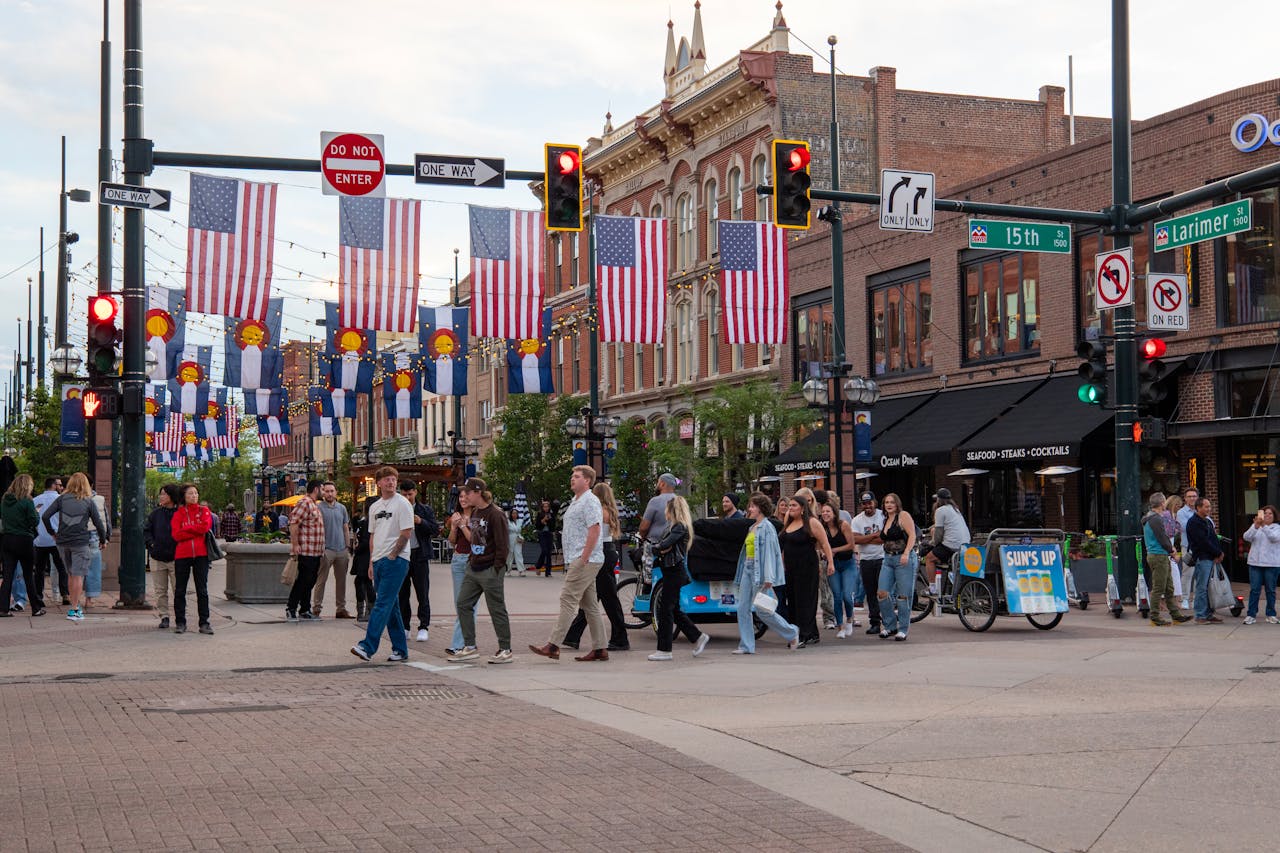WalletHub’s 2025 “Happiest States in America” study ranked all 50 states using 30 indicators tied to emotional and physical well-being, work environment, and community and environment.
The index pulls hard data from agencies like the Census Bureau, CDC, BLS, and AmeriCorps, then weights items such as depression prevalence, sleep sufficiency, safety, work hours, volunteerism, and divorce rates.
What happiness means here
In this article, happiness is a data-based score, not a mood. It reflects everyday conditions that shape life quality across a state, including health and daily habits, work and money life, and community and safety. The score blends indicators like sleep, physical activity, depression prevalence, weekly work hours, income growth, commute time, crime and safety, volunteering, and family stability.
A state can shine in one area yet still rank low overall if another pillar drags it down. Think of it as a weighted snapshot of population trends. High sleep and active lifestyles can be offset by long hours or safety concerns, while strong community support and balanced work schedules can lift scores even where incomes are average.
Below are the ten lowest-ranked states in the 2025 results, along with brief context behind each placement. For health and labor facts referenced alongside the ranking, we rely on recent CDC and federal statistics where available.
The bottom 10 explained
This countdown uses WalletHub’s 2025 composite of 30 indicators across well-being, work, and community. For each state below, we include one or two concrete patterns drawn from the study and from federal datasets to show why it ranked low. The list moves from number 10 down to number 1 for easy scanning.
10) Colorado

Colorado slips into the bottom ten largely because of a weak community and environment score in the composite, even though it performs well on sleep sufficiency and sports participation. That mix shows how community factors can cancel out lifestyle strengths in a combined model. Strong personal habits help well-being, but gaps in community measures can still push a state downward. When the community pillar underperforms, the final ranking reflects that imbalance.
9) Mississippi
Mississippi posts one of the lowest sports participation rates and scores poorly on safety, both of which weigh down its emotional and physical well-being rank. Lower levels of activity often track with weaker health outcomes, while safety concerns press on community stability. Together, those inputs reduce the composite score. Even if individual residents thrive, the state average tilts lower when these indicators move in the wrong direction at scale.
8) Kentucky
Kentucky lands near the bottom for work environment and also trails on emotional and physical well-being in the breakdown. Long work hours in many occupations and persistent health pressures show up as stress markers in the underlying data. When time at work expands and recovery factors lag, people report lower satisfaction with daily life. That combination explains why Kentucky’s overall score sits in the lower tier despite areas of local strength.
7) New Mexico
New Mexico ranks low on well-being and on family stability signals in recent analyses. Higher divorce rates in national state profiles are treated as a community indicator in the model, and that feeds into the final score. When family and social supports are strained, community health metrics tend to slip. Pair that with weaker well-being measures and the overall ranking falls, even with bright spots in culture and landscape.
6) Tennessee
Tennessee appears near the bottom largely because of elevated depression prevalence and weaker marks in emotional and physical well-being. Mental health indicators carry significant weight in the composite because they influence daily functioning, work, and relationships. If depression prevalence rises, it can offset economic positives elsewhere in the dataset. That is why Tennessee’s score sits low even though parts of its economy continue to add jobs and attract newcomers.
5) Alaska
Alaska’s position is dragged down by mental health risk and work strain. CDC tables show Alaska with the highest age-adjusted suicide mortality rate in recent national comparisons, and labor series confirm longer average work weeks than many peers. Longer hours can limit recovery time, while higher suicide mortality signals deeper health challenges. When those two pressures appear together, both the well-being and work pillars weaken, and the overall ranking follows.
4) Alabama

Alabama scores poorly on community and environment metrics and shows low volunteerism relative to national patterns tracked by AmeriCorps and the Census Bureau. Civic participation is one sign of social support. When fewer people volunteer or engage, community connections can thin out. That tends to reduce community strength in the composite and, combined with weaker well-being indicators, helps explain the state’s placement in the bottom ten.
3) Arkansas
Arkansas ranks in the bottom tier for emotional and physical well-being and struggles with sleep sufficiency and sports participation. Those two lifestyle factors are directly embedded in the model, so they carry real weight. Lower sleep and activity often correlate with higher stress and poorer health outcomes at the population level. As those patterns accumulate, the overall score declines, even when economic costs of living may look attractive on paper.
2) Louisiana
Louisiana records the lowest safety score in the study and also shows weak sleep sufficiency. Safety influences how people move through daily life, from commuting to recreation. When safety scores lag, both community and well-being pillars take a hit. Pair that with less adequate sleep and the model shows a steeper drop in overall happiness, since rest and perceived security are core building blocks of daily quality of life.
1) West Virginia
West Virginia ranks last overall, with the highest adult depression prevalence in the study and weak marks across emotional and physical well-being and work environment. High levels of depression can dominate a composite index because they touch many parts of life at once. When a key health indicator is that elevated, smaller strengths in other categories are not enough to offset the pull. That is why the state lands at number one in the countdown.
How to interpret the scores
The index blends three pillars at once, so tradeoffs matter. A state can post strong sleep and activity numbers yet still rank low if safety, community cohesion, or work-life balance lags. The reverse can also be true. Strong civic engagement and safer neighborhoods can lift the community pillar enough to offset average incomes or long commutes. The point is not to label any state for good. The point is to map the conditions that shape daily life, then show where targeted improvements could move population numbers in a healthier direction.
Because the model uses public datasets, trends can shift as conditions change. An improvement in volunteerism, a reduction in long work hours, or better access to mental health resources can lift scores in the next cycle. These results are best read as a guide for policy and planning, and as a reminder that health, work, and community are linked. When one pillar falters, the others feel it. When they rise together, the ranking follows.
Sources
- WalletHub, “Happiest States in America 2025” methodology and indicator set.
- Business Insider summary of WalletHub’s 2025 bottom-ten list and key factor callouts.
- Yahoo News syndication confirms WalletHub’s least-happy list and lowest-ranked states.


